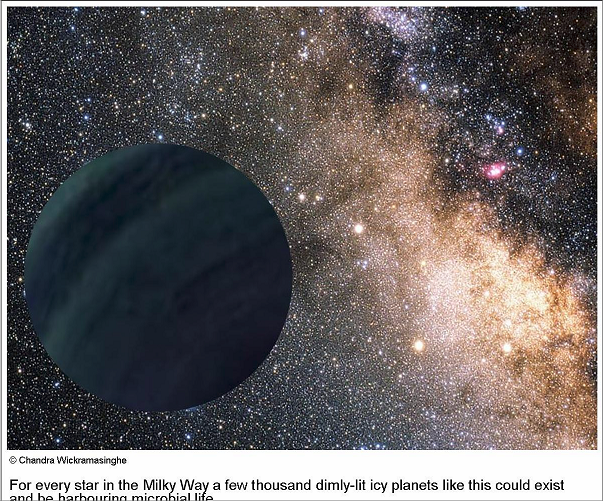Because it's required for astronomy claims this decade, they make note that those planets could have alien life.
The scientists have proposed that these life-bearing planets originated in the early Universe within a few million years of the Big Bang, and that they make up most of the so-called 'missing mass' of galaxies. They calculate that such a planetary body would cross the inner solar system every 25 million years on the average and during each transit, zodiacal dust, including a component of the solar system’s living cells, becomes implanted at its surface. The free-floating planets would then have the added property of mixing the products of local biological evolution on a galaxy-wide scale.

Credit: Professor Chandra Wickramasinghe, Director of the Buckingham Centre for Astrobiology at the University of Buckingham
Since 1995, when the first extrasolar planet was reported, interest in searching for planets has reached a feverish pitch. The 750 or so detections of exoplanets are all of planets orbiting stars and there have been no realistic potential candidates for alien life. The possibility of a much larger number of planets was first suggested in earlier studies where the effects of gravitational lensing of distant quasars by intervening planet-sized bodies were measured.
Recently several groups of investigators have suggested that a few billion such objects could exist in the galaxy. The new research has increased this grand total of planets to a few hundred thousand billion (a few thousand for every Milky Way star) - each one harboring the legacy of ancient cosmic primordial life.
Citation: Wickramasinghe NC et al (2012), 'Life-bearing primordial planets in the solar vicinity', Astrophysics and Space Science, DOI 10.1007/s10509-012-1092-8






Comments